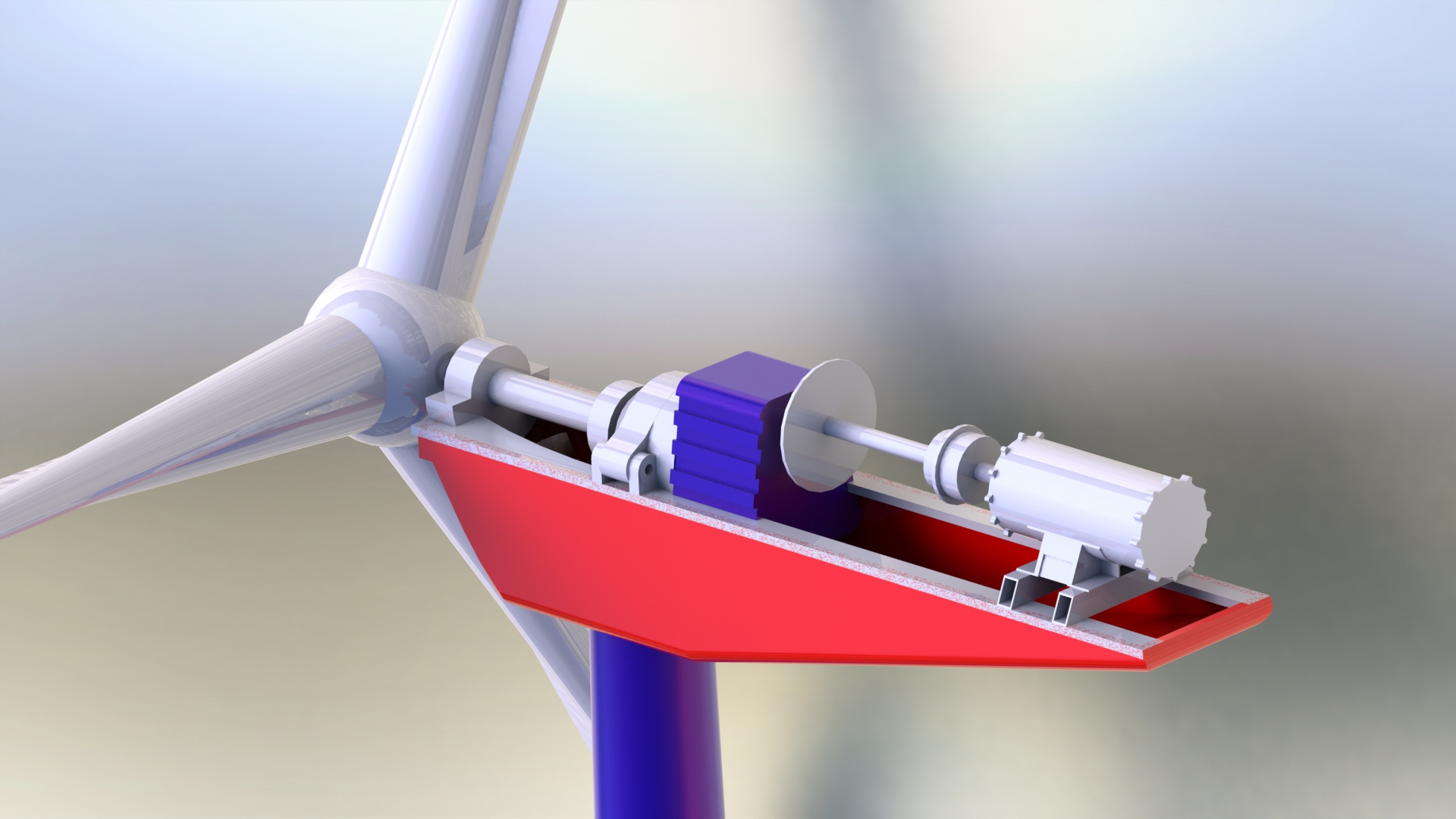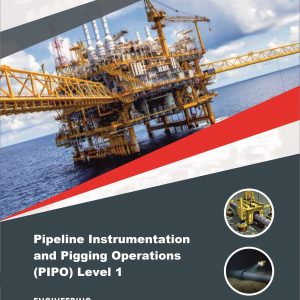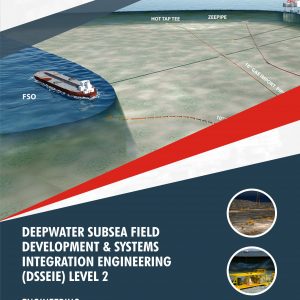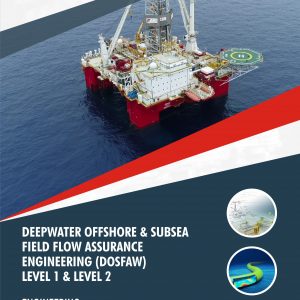Description
The Offshore Wind Turbines Architecture & System Integration for Offshore Graduate Engineers & Technicians (OWTASIGT) Level 1 course is designed to provide foundational knowledge and skills to individuals interested in pursuing a career in the offshore wind energy industry. This course specifically focuses on the architecture and system integration aspects of offshore wind turbines.
The course is targeted towards graduate engineers and technicians who have a background in engineering or a related field. It covers a wide range of topics related to offshore wind turbines, including the following:
Introduction to Offshore Wind Energy: The course begins with an overview of offshore wind energy and its significance in the renewable energy sector. It covers the basics of wind energy conversion and the advantages of offshore wind farms.
Offshore Wind Turbine Components: Participants will learn about the various components that make up an offshore wind turbine, such as the rotor blades, nacelle, generator, tower, and substructures. The course delves into the design, functionality, and integration of these components.
Wind Turbine Control Systems: The course explores the control systems used in offshore wind turbines to optimize power production, ensure safe operation, and adapt to changing wind conditions. It covers pitch control, yaw control, and other important aspects of turbine control.
Electrical Systems and Integration: Participants will gain an understanding of the electrical systems within offshore wind turbines, including the power converter, transformer, cabling, and grid connection. The course explains the integration of these systems and their interaction with the overall turbine operation.
Substructures and Foundations: This section of the course focuses on the different types of substructures and foundations used in offshore wind farms. Participants will learn about monopiles, jackets, gravity-based structures, and floating platforms, along with their design considerations and installation methods.
Maintenance and Operations: The course concludes with an overview of the maintenance and operations aspects of offshore wind turbines. Participants will learn about maintenance strategies, monitoring systems, troubleshooting, and safety procedures.
Throughout the course, participants will engage in theoretical learning through lectures and presentations, as well as practical exercises and case studies to apply their knowledge. They may also have the opportunity to visit offshore wind farms or virtual simulations to gain real-world insights.
Upon completion of the OWTASIGT Level 1 course, participants will have a solid foundation in the architecture and system integration of offshore wind turbines. They will be equipped with the knowledge and skills necessary to work effectively in various roles within the offshore wind energy industry, including engineering, operations, and maintenance.
Offshore wind turbine energy is moving forward at a fast pace and needs people with different skills and differing levels of experience to continue to drive innovation.
This course is structured for graduates and engineers from other disciplines switching careers into offshore wind energy and covers Lifecycle Of Offshore Wind Turbine Farm, Main Elements of an Offshore Wind Farm, Offshore Wind Farm Design, Site Selection, Layout Architecture, Offshore Support Structure, Primary Support Structure Design Inputs, Future Trends for Offshore Winds, Offshore Wind Farm Electrical Architecture, Offshore Wind Farm Substations, Onshore Substations, Subsea Cables, Installation, Risk and Obstacles, Offshore Wind Farm Project Costing, Offshore Wind Turbine Careers paths for Scientific, Engineering, Construction and Business backgrounds.
Course Outline
Overview of offshore wind energy and its significance in the renewable energy sector
Basics of wind energy conversion and principles of wind turbine operation
Advantages and challenges of offshore wind farms
Rotor blades: Design, materials, and aerodynamics
Nacelle: Components, housing the generator and control systems
Generator: Types, characteristics, and electrical conversion
Tower: Structural design considerations and installation methods
Substructures: Types of foundations and their design considerations
Pitch control system: Functionality, operation, and impact on power production
Yaw control system: Purpose, operation, and its role in wind direction tracking
Active and reactive power control: Optimization of power production and grid integration
Control strategies for efficient and safe turbine operation
Power converter: Function, types, and electrical conversion processes
Transformer: Role in voltage regulation and power transmission
Cabling and grid connection: Transmission of power from the turbine to the grid
System integration and interconnection considerations
Monopiles: Design, installation, and load-bearing capabilities
Jackets: Structural design, fabrication, and installation methods
Gravity-based structures: Construction process and stability considerations
Floating platforms: Types, design challenges, and installation techniques
Maintenance strategies: Preventive, predictive, and corrective maintenance
Monitoring systems: Condition monitoring, data analysis, and fault detection
Troubleshooting common issues and component failures
Safety procedures and protocols in offshore wind turbine operations
Environmental impact assessment: Ecological and marine considerations
Regulatory framework and permitting processes for offshore wind projects
Economic feasibility and cost analysis of offshore wind energy
Future trends and advancements in offshore wind technology
Technical Support Section References
Ref 1: Lifecycle of Offshore Wind Turbine Farm
Ref 2: The Main Elements of an Offshore Wind Farm
Ref 3: Offshore Wind Farm Design
Ref 4: Offshore Wind Farm Site Selection
Ref 5: Offshore Wind Farm Layout Architecture
Ref 6: Offshore Wind Farm Support Structure
Ref 7: Offshore Wind Farm Support Structure Design Inputs
Ref 8: Future Trends for Offshore Wind Farm
Ref 9: Offshore Wind Farm Electrical Architecture
Ref 10: Offshore Wind Farm Substations
Ref 11: Onshore Substations of Offshore Wind Farm
Ref 12: Offshore Wind Farm Subsea Cables
Ref 13: Offshore Wind Farm Installation
Ref 14: Offshore Wind Farm Risk Assessment
Ref 15: Offshore Wind Farm Maintenance
Ref 16: Offshore Wind Farm Repair
Ref 17: Offshore Wind Farm Operations JSA
Ref 18: Offshore Wind Farm Operations Project Management
Advanced Technical Support Section References
Ref 1: Overview of offshore wind energy
Ref 2: Offshore wind energy global trends and market dynamics
Ref 3: Offshore wind energy environmental considerations and regulations
Ref 4: Offshore Wind Project Lifecycle
Ref 5: Offshore wind energy site selection and feasibility studies
Ref 6: Offshore wind energy design and engineering considerations
Ref 7: Offshore wind energy construction and installation processes
Ref 8: Offshore wind energy operations and maintenance strategies
Ref 9: Decommissioning and repurposing of offshore wind farms
Ref 10: Offshore Wind Turbine Technology
Ref 11: Types of offshore wind turbines and their components
Ref 12: Technical considerations for turbine design and manufacturing
Ref 13: Offshore wind energy installation techniques and challenges
Ref 14: Offshore wind energy grid integration and power transmission
Ref 15: Offshore wind energy project planning and risk management
Ref 16: Offshore wind energy defining project objectives and scope
Ref 17: Offshore wind energy work breakdown structure (WBS) development
Ref 18: Offshore wind energy project scheduling and resource allocation
Ref 19: Offshore wind energy risk identification, assessment, and mitigation strategies
Ref 20: Offshore wind energy stakeholder engagement and communication
Ref 21: Importance of stakeholder engagement in offshore wind projects
Ref 22: Offshore wind energy communication strategies for different stakeholders
Ref 23: Offshore wind energy managing relationships and addressing concerns
Ref 24: Offshore wind energy public perception and community engagement
Ref 25: Offshore wind energy procurement and contract management
Ref 26: Procurement process for offshore wind projects
Ref 27: Offshore wind energy supplier selection and evaluation
Ref 28: Offshore wind energy contract negotiation and management
Ref 29: Offshore wind energy performance monitoring and dispute resolution
Ref 30: Offshore wind energy health, safety, and environmental considerations
Ref 31: Regulatory frameworks and standards for offshore wind projects
Ref 32: Offshore wind energy occupational health and safety practices
Ref 33: Offshore wind energy environmental impact assessment and mitigation measures
Ref 34: Offshore wind energy compliance with legal and environmental requirements
Ref 35: Offshore wind energy project cost and financial management
Ref 36: Cost estimation and budgeting for offshore wind projects
Ref 37: Offshore wind energy financial analysis and feasibility assessment
Ref 38: Offshore wind energy funding mechanisms and financing options
Ref 39: Offshore wind energy cost control and financial reporting
Ref 40: Offshore wind energy performance monitoring and reporting
Ref 41: Offshore wind energy key performance indicators (KPIs) and metrics
Ref 42: Offshore wind energy change management and project control techniques
Ref 43: Quality assurance and quality control processes of offshore wind energy
Ref 44: Documentation requirements throughout the project lifecycle of offshore wind energy
Ref 45: Progress reports and project updates of offshore wind energy
Ref 46: Technical documentation and specifications of offshore wind energy
Ref 47: Compliance reporting and regulatory documentation of offshore wind energy
Ref 48: Team building and team dynamics of offshore wind energy
Ref 49: Leadership skills for project managers of offshore wind energy
Ref 50: Conflict resolution and problem-solving for offshore wind energy
Ref 51: Motivating and empowering of offshore wind energy project teams
Ref 52: Analysis of successful offshore wind projects
Ref 53: Lessons learned and best practices of of offshore wind energy
Ref 54: Innovation and emerging trends in offshore wind project management
Assessment
Participant underpinning knowledge of offshore wind turbines architecture & system integration at beginners level will be accessed with multiple choice questions at the end of the course.
Professional Certificate
Issued directly by Chess Subsea Engineering Europe.
Participant may be presented for Offshore Petroleum Training Organization (OPITO) Certification.
How to Register
Click here to download registeration booklet on msword and email completed booklet to info@chesssubseaengineering.org directly.














